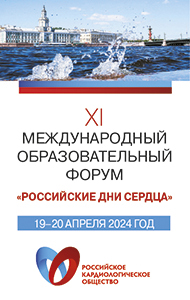Recent Cox-2 inhibitor use increased ischemic stroke mortality risk
The use of cyclooxygenase-2 inhibitors before hospitalization for stroke is associated with increased mortality in cases of ischemic stroke, but not hemorrhagic stroke, according to recent findings.
This risk appears to be greatest among new users of older Cox-2 inhibitors, researchers wrote.
In a nationwide, population-based cohort study, researchers reviewed the Danish National Database of Reimbursed Prescriptions and identified 100,043 Danish patients hospitalized with acute first-time stroke from July 2004 to 2012, including 51,224 with ischemic stroke, 32,512 with unspecified stroke, 11,779 with intracerebral hemorrhage and 4,528 with subarachnoid hemorrhage. The researchers also prospectively identified nonsteroidal anti-inflammatory drug prescriptions filled by stroke patients before hospital admission. Selective NSAIDs identified for analysis included dexibuprofen, ibuprofen, indomethacin, ketoprofen, naproxen and tolfenamic acid. Selective Cox-2 inhibitors also were included in the analysis and subcategorized as older Cox-2 inhibitors (diclofenac, etodolac, meloxicam and nabumetone) or coxibs (celecoxib, etoricoxib and rofecoxib).
Patients were categorized according to NSAID use, including current (prescription filled within 60 days before hospitalization; n=10,835); former (prescription filled 60-180 days before admission; n=8,402) and nonusers (n=80,806). Data on 30-day, all-cause mortality was extracted from the Danish Civil Registration System. Patients were followed from hospitalization to 30 days, death or emigration, whichever came first.
Mortality at 30 days among nonusers of NSAIDs was 35.1% among those with subarachnoid hemorrhage, 24.5% among those with intracerebral hemorrhage, 14.3% for unspecified stroke and 8.7% for ischemic stroke. Multivariable analysis of patients with ischemic stroke indicated no significant association between current NSAID use and mortality risk compared with nonusers.
Current Cox-2 inhibitor users had an adjusted HR of 1.19 (95% CI, 1.02-1.38) vs. nonusers for mortality, which researchers wrote was driven by new users (HR=1.42; 95% CI, 1.14-1.77). Specifically, this association was pronounced among new use of traditional Cox-2 inhibitors (HR=1.42, 95% CI, 1.14-1.78), including etodolac (HR=1.53; 95% CI, 1.02-2.28) and diclofenac (HR=1.28; 95% CI, 0.98-1.68). Similar results were observed on propensity score-matched analysis.
No association was observed between risk for ischemic stroke mortality and former Cox-2 inhibitor use, or between 30-day mortality and nonselective NSAID use among those with intracerebral or subarachnoid hemorrhage. However, researchers noted a reduced risk for mortality related to subarachnoid hemorrhage among nonselective NSAID users (HR=0.61; 95% CI, 0.41-0.91) and former users (HR=0.69; 95% CI, 0.49-0.97).
“Our study adds to the increasing body of evidence concerning the vascular risk and prognostic impact of associated with use of Cox-2 inhibitors,” the researchers wrote. “The prognostic impact also needs to be considered when prescribing older or newer Cox-2 inhibitors to patients at increased risk of thromboembolic events.”
Disclosure: The researchers report no relevant financial disclosures.
Source: www.healio.com






